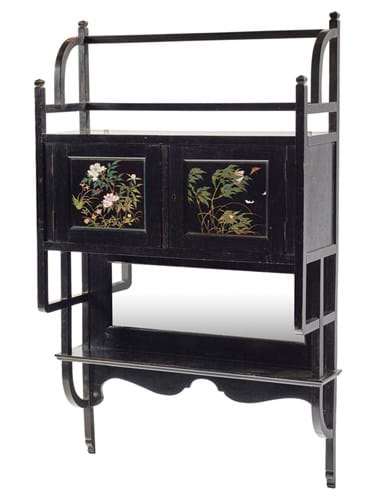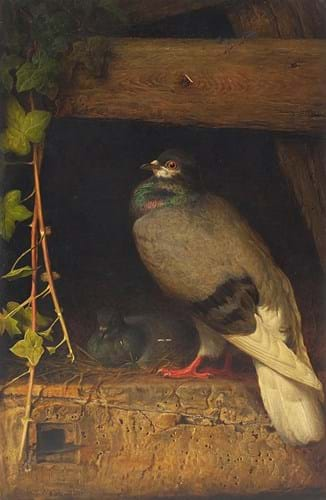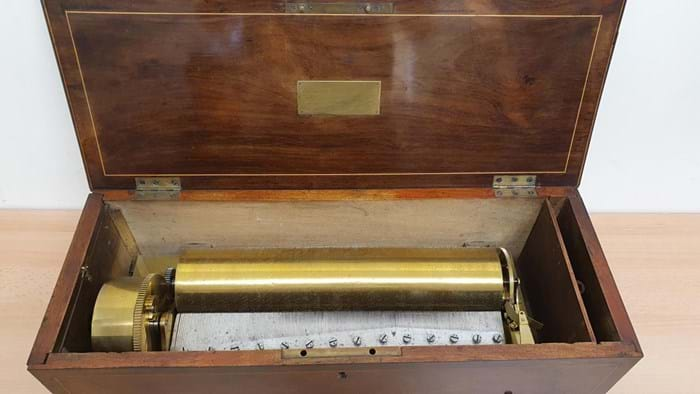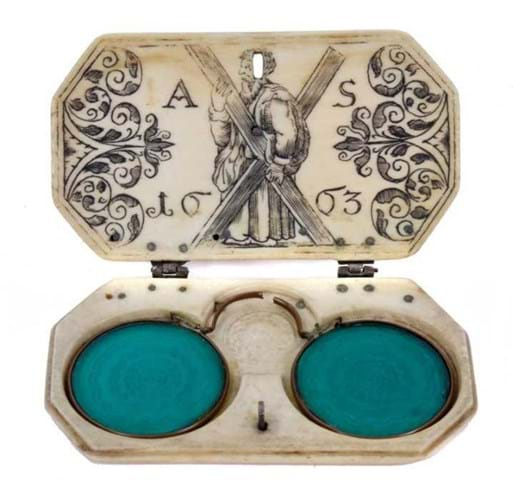1. EW Godwin wall cabinet – £19,000
The Design since 1860 sale at Lyon & Turnbull in Edinburgh on April 21 included this ebonised wood and cloisonné mirrored wall cabinet designed by EW Godwin (1833-86), pictured above. It was probably made by art furniture manufacturers William Watt & Co (1834-85), the firm that produced and sold some of the finest furniture of the Aesthetic Movement.
This 3ft 6in (1.06m) wide cabinet is typical of the Anglo-Japanese style associated with Godwin’s designs. He often incorporated real Japanese artefacts into his work, shopping regularly in the 1870s at Liberty’s East Indian Art Warehouse on Regent Street, and this is possibly where the cloisonné enamel panels to the doors were acquired.
Measuring 2ft 2in (66cm) high, this is the cabinet pictured in The Secular Furniture of E. W. Godwin by Susan Soros (1999) and came for sale from ‘an important private collection’ with an earlier provenance to dealer Paul Reeves.
Estimated at £5000-8000, it sold at £19,000.
2. Webbe’s ‘Two Pigeons’ – £21,000
Although William James Webbe (1830-1904) is included in Percy Bate's early study of the Pre-Raphaelite movement, The English Pre-Raphaelite Painters, he remains a shadowy figure. Little is known of his life – he appears to have been trained in the Nazarene tradition in Düsseldorf – and even the spelling of his name is equivocal. He signed his work both Webb and Webbe.
Webbe was an early convert to Pre-Raphaelitism and a disciple of William Holman Hunt – his paintings exhibited at the Royal Academy from 1853-78 worked with painstaking detail and imbued with religious and allegorical content. His most famous work, partly on account of the huge price it fetched a decade ago, is The White Owl of 1856. One of two versions sold for a remarkable £589,250 (including premium) at Christie’s King Street in 2012.
The meticulously painted 17.75 x 11.75in (45 x 30cm) oil on panel offered on April 21 at Eastbourne Auctions was signed and dated WJ Webb 1869. It depicted two pigeons nesting in a wooden loft with a stem of ivy growing to the left. A detail suggested the signature was possibly refreshed although verso was a paper exhibition label verso inscribed No 3 W J Webb, Claremont Cottage, Downshire Hill, Hampstead. Only modest expectations of £500-1000 were set by the auctioneer but bidding reached £21,000, at which point it sold to a buyer via thesaleroom.com.
3. ‘Grand Format’ musical box – £27,000
John Gresham was a third generation member of a wealthy Hull timber importing family. Before joining the business he chose to become a performer in the music halls, circuses and fairgrounds for several years and this interest never left him. In 1980 he bought the Ritz cinema in Pocklington and opened Penny Arcadia, a museum to house a fine private collection of coin-operated amusement machines. The museum closed after Gresham’s death in 1995 when elements of the collection were sold but other pieces retained by the family have remained in storage for the past quarter of a century.
The auction of stereoscopes, mutoscopes and coin-ops at Spicers in Goole, East Yorkshire on April 23 also included Gresham’s collection of musical boxes. The long-serving president of the Musical Box Society of Great Britain owned a key wind quatre overture musical box by the Lecoultre and Falconnet, the finest maker of the 19th century. These ‘Grand Format’ boxes playing four overtures are among the most desirable of all music boxes – a similar example with the serial number 781 sold for £31,500 at Locke & England in March 2017.
The Gresham box, in a 23in (57cm) rosewood and boxwood case, has the serial number 703 dating it to the late 1830s. It was in working condition playing the four overtures inscribed to a brass tune plaque: Ouverture du Chaval de Bronze, Id de la Prison d'Edimbourg, Id de la L’Estocq and Id de Semiramide. It was in working condition with no apparent damage to the vital parts of the mechanism.
Estimated at a modest £3000-4000, it found a buyer at £27,000.
4. 17th century spectacles case – £2500
While Georgian spectacles are relatively common at auction, 17th century examples are much harder to find. An original ivory and silver ‘dug out’ case, here engraved and dated 1663, is also a rarity.
It came for sale at Reeman Dansie in Colchester on April 28 with an estimate of £500-800 from the descendants of Edward and Evelyn Grandly of Westcott, Dorking. Some 34 people were watching the item on thesaleroom.com in the run up to the sale. It sold at £2500.
In the 17th century the wearing of spectacles did become more widespread, although they were still considered aids for the elderly. Many optical goods were made in German centres such as Nuremberg and Regensburg and imported to England.
Although catalogued as sunglasses, frames with tinted lenses were considered to be therapeutic. The diarist Samuel Pepys purchased a pair of spectacles with green lenses from the London maker John Turlington in December 1666 in the hope that the tint might relieve a soreness in his eyes caused, he supposed, by working in candlelight.
They will have looked like this pair – a bow form made to sit (like later pince-nez) on the bridge of the nose. Spectacles with temples (arms) were an 18th century invention.
There is a Scottish link. The interior of the lid is engraved and stained with the figure of Saint Andrew carrying the cross flanked by the initials AS and the date 1663. The case was in good order although the glasses have a break at the bow.
5. 18th century sampler – £10,000
Estimated at just £80-150 this Queen Anne or George I period needlework sampler sold for £10,000 via thesaleroom.com at Lawrences in Crewkerne on April 23.
Key to its appeal is the relatively early date (Grace Simpson, 1714) – the period when the typical format of the English sampler evolved from the band sampler, typically filled with rows of repeating patterns worked in coloured silks, to the squarer shape worked with words and pictorial motifs. The result was something that could be displayed on the wall in the style of a painting or a print, rather than kept rolled up as a long, narrow reference piece.
This 14.25 x 12.5in (36 x 32cm) example was worked with central alphabets and Glory be to God within a scrolling border of decorative flowers. The fanciful ho-ho bird above and the white hart below were particularly charming features.










